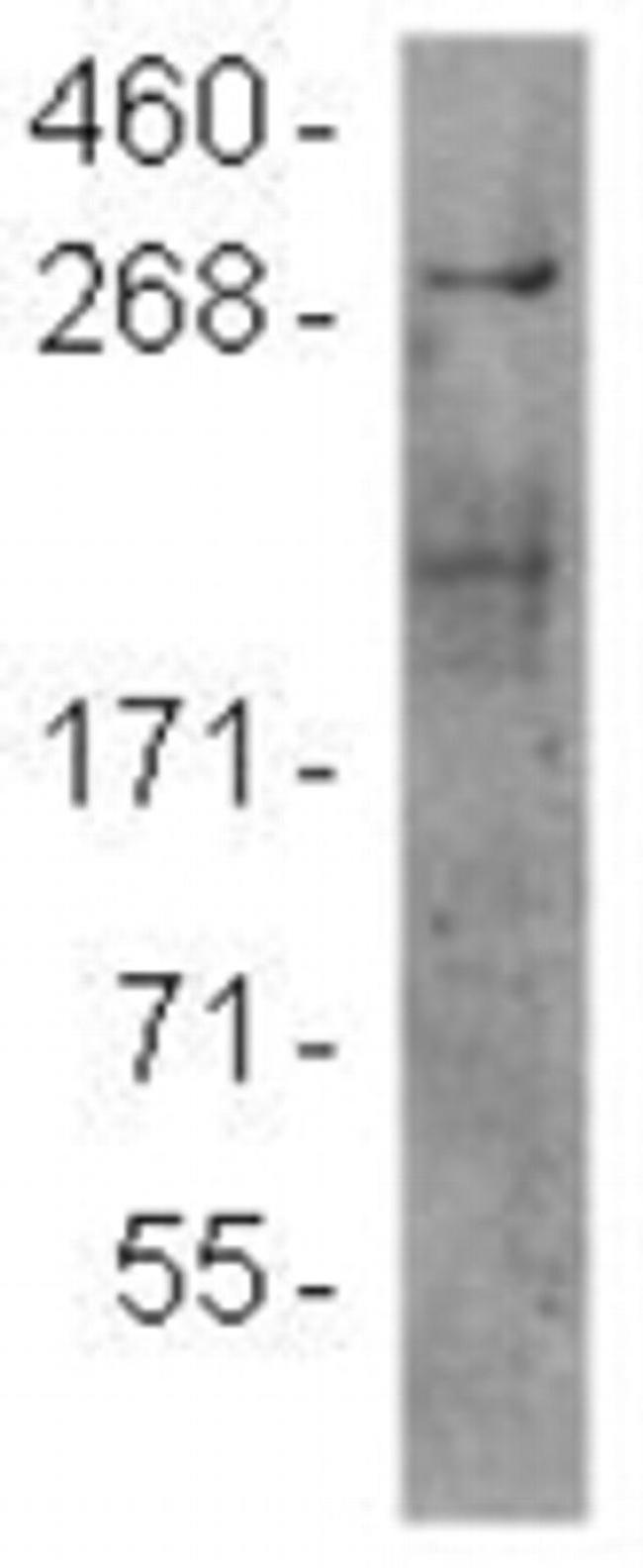Search Thermo Fisher Scientific
Product Details
14-2190-82
Species Reactivity
Host/Isotype
Class
Type
Clone
Conjugate
Form
Concentration
Purification
Storage buffer
Contains
Storage conditions
Shipping conditions
RRID
Product Specific Information
Description: This F11 monoclonal antibody reacts with human, mouse, and rat mammalian target of rapamycin (mTOR). This 289-kDa serine/threonine kinase is activated via phosphorylation at Ser2448 by the PI3K/Akt signaling pathway in response to growth factors, energy, nutrients, and stress. mTOR is highly conserved amongst eukaryotes and constitutively expressed in immune (e.g. T, B, NK, dendritic cells, mast cells, and neutrophils) and non-immune tissues (e.g. heart). mTOR exists as a member of two distinct complexes, mTORC1 and mTORC2, which have differing sensitivities to rapamycin and phosphorylation targets. Rapamycin inhibits mTOR activity by binding FKBP12, which causes dissociation of mTORC1 and mTORC2. This molecule plays a critical role in cell metabolism, survival, dendritic cell maturation and activation, and protein synthesis. Deregulation of mTOR has been implicated in a variety of cancers. Studies have also suggested a role for mTOR in Foxp3 expression and regulatory T cell differentiation.
Applications Reported: This F11 antibody has been reported for use in immunoprecipitation, immunoblotting (WB), and immunohistology staining of paraffin embedded tissue sections.
Applications Tested: This F11 antibody has been tested by western blot analysis of reduced cell lysates prepared from Jurkat cells. This can be used at 1-5 µg/mL. It is recommended that the antibody be carefully titrated for optimal performance in the assay of interest.
Purity: Greater than 90%, as determined by SDS-PAGE.
Aggregation: Less than 10%, as determined by HPLC.
Filtration: 0.2 µm post-manufacturing filtered.
Target Information
FRAP1 (mTOR) is a serine/threonine kinase that plays a critical role in cellular growth and proliferation. Perturbations in the mTOR/PI3-kinase/AKT pathway are associated with numerous forms of cancer. FRAP1 is also the target of rapamycin and its analogues, which are currently used as immunosuppressants and cancer therapeutics. Mutations affecting the gene results in Smith-Kingsmore syndrome.
For Research Use Only. Not for use in diagnostic procedures. Not for resale without express authorization.
References (0)
Bioinformatics
Protein Aliases: angiopoietin-like factor CDT6; FK506 binding protein 12-rapamycin associated protein 1; FK506 binding protein 12-rapamycin associated protein 2; FK506-binding protein 12-rapamycin complex-associated protein 1; FKBP-rapamycin associated protein; FKBP-rapamycin associated protein (FRAP); FKBP-rapamycin-associated protein FRAP; FKBP12-rapamycin complex-associated protein; FKBP12-rapamycin complex-associated protein 1; m-TOR; Mammalian target of rapamycin; Mechanistic target of rapamycin; mechanistic target of rapamycin (serine/threonine kinase); mTOR; mTORC1; Rapamycin and FKBP12 target 1; rapamycin associated protein FRAP2; Rapamycin target protein 1; RAPT1; Serine/threonine-protein kinase mTOR
Gene Aliases: 2610315D21Rik; AI327068; flat; FRAP; FRAP1; FRAP2; MTOR; RAFT1; RAPT1; SKS
UniProt ID: (Human) P42345, (Mouse) Q9JLN9
Entrez Gene ID: (Human) 2475, (Mouse) 56717

Performance Guarantee
If an Invitrogen™ antibody doesn't perform as described on our website or datasheet,we'll replace the product at no cost to you, or provide you with a credit for a future purchase.*
Learn more
We're here to help
Get expert recommendations for common problems or connect directly with an on staff expert for technical assistance related to applications, equipment and general product use.
Contact tech support

